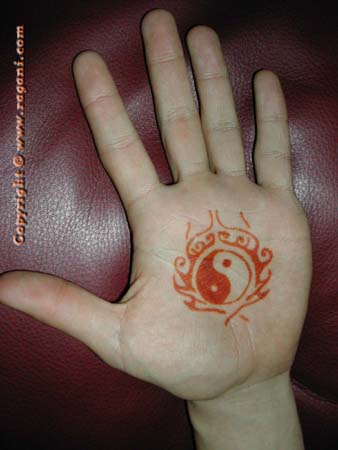|
|
|
|
Henna is made from the leaves of the Lawsonia inermis plant which are dried and made into a paste that is applied to the skin to dye a design into the skin. Before applying henna to the skin, it is best to make sure skin is clean and free of pore clogging lotions and sunscreens. Eucalyptus oil is applied to help prepare the skin to receive the henna. This helps open the pores and provides additional darkening agents that work with the henna. The henna paste is applied by hand to the body in the desired pattern, using a jacquard bottle with a metal tip, much like puff paint or cake decorating. It does not hurt to get henna applied, and on a hot day, the cooling effect created while the paste evaporates can be very pleasant. I do all my henna freehand, and do not use stencils or transfers, so each design is adjusted to fit the chosen location on your body. A lemon juice and sugar solution is applied to the dried henna, as a kind of fixative. This helps prevent the paste from flaking off once it dries and to keep it moist so it is absorbed into the skin better. It is best to apply this solution about every 15 minutes for the first hour or so. The dried paste should remain on the skin for at least 3 hours, longer if possible. When ready, the dried paste is scraped off to reveal the stain left on the skin. If needed, vegetable oil can be used to soften the dried paste to assist in the removal. The stain will darken over the next 24 hours. Henna body art can last from 1 to 3 weeks, on average, and with proper care, even longer. |
 |
|
“When applied to the skin, the active elements in a paste of henna leaves provides a cooling and astringent action along with protection against many surface fungi and bacteria. Henna can help to lower body temperature to soothe headaches, fevers, burning feet (which may be a B-vitamin deficiency) and even hysteria or a violent temper.” Henna
from Head to Toe!, Norma
Pasekoff Weinberg |
|
